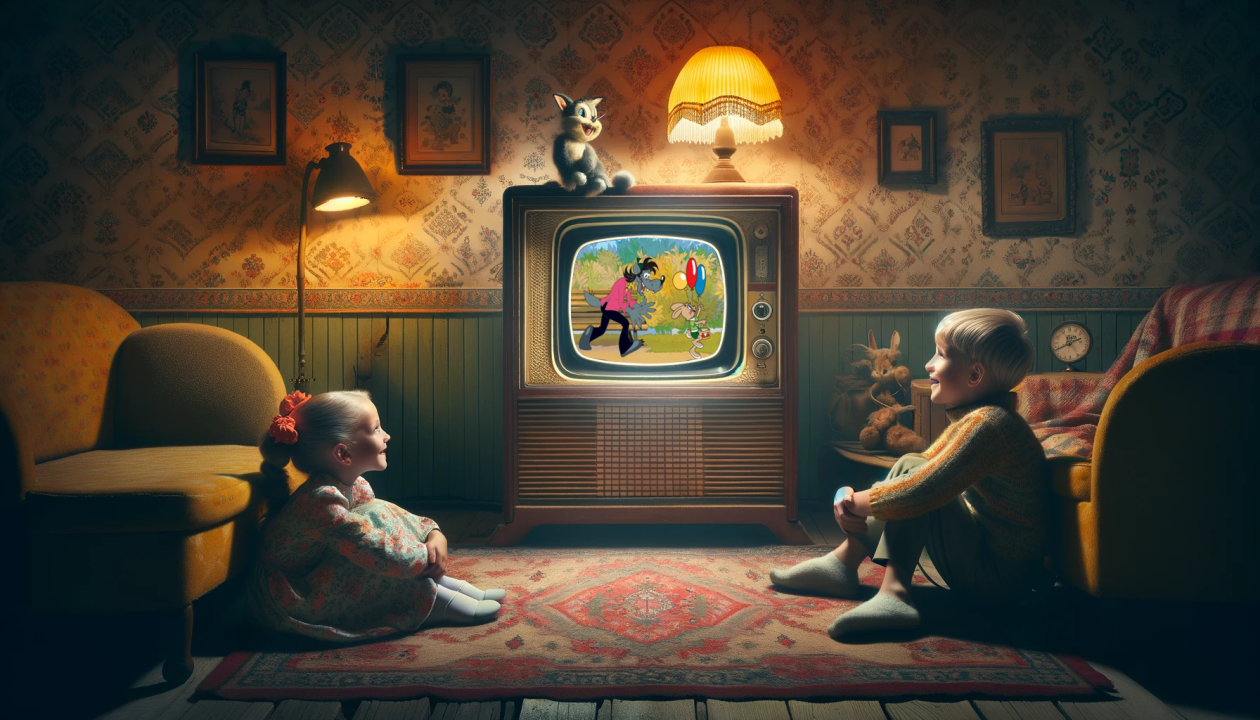Television as a Reflection of Italian Society: From the Golden Age to Today
Television has played a central role in the formation of a unified national identity in Italy, especially after the Second World War, and its importance cannot be overstated. Over the last 30 years, the medium has undergone significant transformation, reflecting broader shifts in Italian society and becoming a vehicle for both personal connection and cultural development. This influence extends far beyond Italy, with the growing popularity of Italian TV channels in the USA showcasing the global reach and lasting impact of Italian television.
The Genesis of Italian TV: A Post-War Awakening
Italian TV’s early years were deeply intertwined with the country’s national identity, particularly after World War II, as Italians began to rebuild their nation. In a fragmented society with diverse regional identities and dialects, TV provided a unifying force, bringing together people from all walks of life through shared experiences. The 1950s marked the advent of educational and culturally rich programming, often seen on Italy’s public broadcaster, RAI (Radiotelevisione Italiana), which emphasized content that highlighted Italy’s historical and linguistic heritage.
This era was characterized by government-controlled broadcasting, and the genre of “edutainment” emerged as a powerful tool. Programs that combined education with entertainment helped shape the collective identity of the nation, informing citizens about historical events, national pride, and the importance of language. The TV had become a medium through which societal values were transmitted, offering both entertainment and an avenue for the public to grasp national issues.
The 1980s: The Rise of Commercialization and Global Influences
The 1980s were a key turning point for Italian television. The emergence of private networks, notably Silvio Berlusconi’s Mediaset, challenged the dominance of public television. Mediaset introduced a new wave of entertainment, taking inspiration from American commercial TV, with programs such as Dallas and Dynasty becoming cult phenomena among Italian viewers. These shows, along with action-packed U.S. series like MacGyver and A-Team, marked a shift towards more entertainment-focused programming.
The 1980s also saw the rise of the now-legendary Drive-In, a late-night variety show that epitomized the decade’s carefree, sometimes irreverent, mood. It represented the social transformation of Italy during a time of economic growth and social freedom. This marked a departure from the more serious and educational programming of the past, as TV began to mirror the optimism of the 1980s, a time when Italians found themselves enjoying unprecedented levels of economic growth.
The 1990s: Music, Youth Culture, and the New Internationalization
The 1990s brought about another dramatic shift in Italian TV, as music, youth culture, and international influences took center stage. Festivalbar, the annual summer music festival, became an essential part of Italian pop culture, reflecting the growing obsession with music and entertainment. Shows like Sarabanda and MTV Italia were not only about music but also about creating a cultural space for young Italians to engage with international pop culture.
Television also began embracing more youthful, rebellious themes in the 1990s. In addition to its U.S. counterparts, Italy saw a surge in Italian satire and comedy, such as Striscia la Notizia and Le Iene, programs that offered sharp social commentary and often dealt with controversial topics. These satirical shows mirrored the growing disillusionment with traditional politics and the government.
The Early 2000s: Reality TV and the Shift to Infotainment
By the early 2000s, Italian television had adopted the reality TV craze that had swept across the globe. The Italian version of Big Brother, as well as other reality shows like La Fattoria (The Farm), dominated TV screens, offering viewers a voyeuristic look into the lives of strangers, often creating massive cultural buzz. This shift represented a stark departure from the more structured, scripted TV of the past, highlighting a growing public fascination with fame and the personal lives of others.
At the same time, Italy’s media began to feature an influx of talent shows and talk shows, many of which had international formats. The Italian versions of The X Factor and Amici became mainstream hits, appealing to a broad range of viewers. These programs were not only about entertainment but also about shaping the cultural taste of a generation. TV’s transformation into infotainment allowed Italian television to engage a more diverse audience, spanning all age groups and backgrounds.
The Present Day: Changing Demographics and a New TV Paradigm
The majority of Italian viewers are over the age of 55, with a significant portion being female. This demographic has shaped the content available on public TV, with Spanish soap operas and endless reruns of shows like Beautiful and Una Vita continuing to dominate the airwaves. These programs maintain a deep connection with the older generation, evoking nostalgia and cultural familiarity.
However, younger Italians and more cosmopolitan adults are increasingly turning to premium, international content. Pay-to-view broadcasters like Sky Italia and streaming services such as Netflix are offering high-quality, international TV shows that appeal to contemporary tastes. Shows from the U.S., the U.K., and Europe are accessible at the click of a button, and Italian viewers are embracing diverse genres that range from sci-fi to gritty dramas. This shift marks a significant cultural change, as Italy’s media consumption patterns begin to mirror those of other Western nations.
Football: A National Obsession Reflected on TV
One of the most defining aspects of Italian culture is its passion for football, which has a major presence on television. National football events like the Serie A, the Champions League, and the Europa League are essential components of Italian TV programming. These events are viewed as national spectacles, drawing in massive audiences, and are broadcast on both free-to-air and pay-to-view channels.
The games are more than mere entertainment—they are events that unite the country and serve as a means for Italians to express their regional and national pride. Football on TV is an extension of this sentiment, allowing fans to cheer on their teams and experience the highs and lows of victory and defeat from the comfort of their homes.
TV as a Reflection of Italian Identity
Italian television has undergone significant transformations over the last few decades, from its early days of political and educational programming to the emergence of entertainment-driven reality shows and globalized content. Today, TV in Italy is more diverse than ever, with something for every age group and cultural background.
From the communal, family-centered viewing of the past to the modern trend of international programming, television in Italy continues to evolve in ways that reflect the social, economic, and political changes in the country. Italian TV is, and always has been, a key cultural tool—one that shapes and mirrors Italian society, creating a shared space for connection, reflection, and entertainment.







